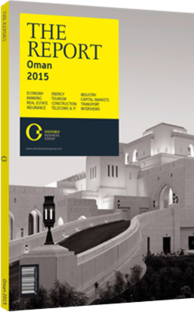Leading the region in becoming energy independent
The only country in the GCC with a ministry dedicated to climate affairs and renewable energy development, Oman has long looked to solar power to achieve energy independence while maintaining steady hydrocarbon exports. With the 2013 announcement of a pilot solar project in the Dhofar governorate, the renewables sector could soon enjoy a period of strong private expansion, underpinned by targeted government spending and open ownership models, as the country seeks to implement the Vision 2020 goal of generating 10% of total energy via renewable sources.
Renewables
As a 2005 signatory to the Kyoto Protocol, Oman has made strides in setting a record as a renewables innovator. In a landmark 2008 report, the Authority for Electricity Regulation (AER), the agency responsible for regulating Oman’s power and water sectors, determined that the sultanate’s solar energy potential could allow it to become energy independent, and eventually allow for solar-generated electricity export, if a viable solar generation model were to be fully implemented. The following year, Oman became the only GCC member to establish a designated national authority for renewable energy, the Ministry of Environment and Climate Affairs.
Solar
Since then, solar projects have garnered increased government attention. In September 2014 US firm GlassPoint Solar received $53m in financing from investors including the State General Reserve Fund and Royal Dutch Shell, following a successful solar-driven enhanced oil recovery (EOR) pilot project. In February 2014 researchers from the Caledonian College of Engineering, backed by a $381,000 grant from the Oman Research Council, began to study the use of concentrated solar power (CSP) in desalination plants, while announcing plans to develop an operational system by the end of 2015.
“Sunlight continues to be free, and will last longer than oil will,” Rod MacGregor, the president and CEO of GlassPoint, told OBG. “What Oman does, which is unique in the region, is experiment with new models and methods in partnership with the private sector.” The shift towards solar makes sense: Oman’s high ratio of “sky clearness” allows solar collectors to receive daily radiation ranging from 5500 to 6000 watt-hours (Wh) per square metre daily in July, to a low of 2500-4000 Wh per sq metre in January, giving the sultanate one of the highest solar energy densities in the world. The country also has sufficient land available for large-scale solar projects: according to the AER report, it is theoretically possible for Oman to power itself entirely on solar energy, by utilising 280 sq km, or about 0.1% of the country’s total land area, for solar collection.
Expansion
There are various ideas for wide-scale, commercialised solar development. Terra Nex Financial Engineering is a Swiss wealth management company that announced plans in 2012 to develop a $2bn integrated power project with solar components in Haima, while the government has committed to establishing the Oman National Solar Energy Centre, which would conduct solar energy research and support technology transfer between the sultanate and foreign firms. However, it was not until late 2013 that the government took its first major steps towards a commercially viable renewable power project.
In November 2013 US firm Astonfield, in cooperation with local firm Multitech, signed an agreement with the Rural Areas Electricity Company (RAEC) to construct Oman’s first solar power plant, a 303-KW pilot project expected to produce 558 MWh a year in Al Mazyunah in the Dhofar governorate.
The 8000-sq-metre project will use crystalline-silicon and thin-film PV technologies and is expected to produce electricity in line with the region’s existing diesel power station. Italian company Solesa International was selected as the EPC contractor for the project, which will supply RAEC with solar electricity for 20 years under a build-own-operate model, in which Astonfield and Multitech will finance and own the power plant for its lifetime and will also take responsibility for the project’s phased development.
You have reached the limit of premium articles you can view for free.
Choose from the options below to purchase print or digital editions of our Reports. You can also purchase a website subscription giving you unlimited access to all of our Reports online for 12 months.
If you have already purchased this Report or have a website subscription, please login to continue.

